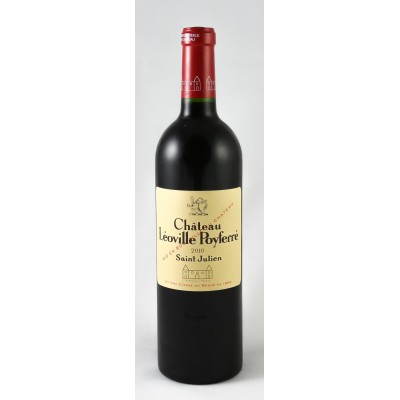-
Bordeaux

Appellations
-
Burgundy

Winery
- Lalou Us Leroy
- Domaine Benoit Ente
- Domaine Jules Desjourneys
- Domaine Arnaud Ente
- Domaine Laurent Tribut
- Domaine Gros Frère et Soeur
- Domaine Pattes Loup
- Domaine Boris Champy
- Domaine Petit-Roy
- Domaine Bertagna
- Alice et Olivier De Moor
- Domaine de Villaine
- Vincent Girardin
- Sylvain Pataille
- Rémi Jobard
- François Carillon
- Domaine Dujac - Dujac Fils & Père
- Alex Moreau (Bernard Moreau)
- Denis Mortet
- Domaine Génot-Boulanger
- Domaine Henri Gouges
- Domaine Jacques-Frédéric Mugnier
-
Rhône

Appellations
Winery
- Domaine Pierre Gonon
- Domaine Gramenon
- Clos des Papes
- Alain Graillot
- Dard et Ribo
- Domaine de l'Anglore - Eric Pfifferling
- Domaine Yves Gangloff
- Domaine Saint Préfert
- Domaine Jean-Michel Gerin
- Domaine Vernay
- Domaine du Coulet - Matthieu Barret
- Domaine Semaska
- Domaine Houillon
- Domaine Santa Duc
-
Loire
Appellations
Winery
- La Grange Tiphaine
- Alain et Jérôme Lenoir
- Jérôme Bretaudeau
- Vignoble de la Coulée de Serrant
- Domaine de la Chevalerie
- Thibaud Boudignon
- Les Cailloux du Paradis
- Domaine des Sables Verts
- Domaine Guiberteau
- La Porte Saint Jean - Sylvain Dittière
- Clos Rougeard
- Domaine François Chidaine
- François Cotat
- Pascal Cotat
-
Champagne

Catégorie
Winery
- Dom Pérignon
- Champagne Jacques Selosse
- Champagne Henri Giraud
- Champagne Augustin
- Champagne Jacquesson
- Domaine Stéphane Tissot (Jura)
- La Grange Tiphaine
- Domaine Ganevat (Jura)
- Champagne Bonnet Ponson
- La Porte Saint Jean - Sylvain Dittière
- Roses de Jeanne - Cédric Bouchard
- Bruno Paillard
- Fleury
- Château Cazebonne
- Domaine François Chidaine
- • Blanc de Blancs •
- • Blanc de Noirs •
- • Champagne Rosé •
- • Brut Nature •
-
Languedoc
Appellations
-
Other Regions
Appellations
Winery
- Domaine Marcel Lapierre (Beaujolais)
- Domaine Jean Foillard (Beaujolais)
- Domaine Abbatucci (Corse)
- Domaine de Vaccelli (Corse)
- Domaine de La Tournelle (Jura)
- Domaine Jean Macle (Jura)
- Domaine Stéphane Tissot (Jura)
- Domaine des Ardoisières (Savoie)
- Domaine Tempier (Provence)
- Clos Larrouyat (Jurançon)
- Elian Da Nos (Côtes du Marmandais)
- Domaine Myrko Tépus (Provence)
- Domaine Ganevat (Jura)
- Château Montus - Alain Brumont (Madiran)
- Domaine Labet (Jura)
- Yvon Métras (Beaujolais)
-
Foreign Wines

Pays
Winery
- Weingut Keller (Germany)
- Weingut Egon Müller (Germany)
- Weingut Dönnhoff (Germany)
- Sassicaia - Tenuta San Guido (Italie)
- Clos Mogador (Spain)
- Marie-Thérèse Chappaz
- Château Musar (Lebanon)
- Alheit Vineyard (South Africa)
- David & Nadia (South Africa)
- Leeuwin Estate (Australia)
- Sine Qua Non (United-States)
- Vega Sicilia (Spain)
- Pio Cesare (Italy)
- Tignanello - Marchesi Antinori (Italy)
- Biondi Santi (Italy)
- Giacomo Borgogno (Italy)
- Felton Road (New-Zealand)
- Domaine de Beudon (Switzerland)
- Alain Graillot
- Weingut Wasenhaus (Germany)
- Lustau (Spain)
- Klein Constantia (South Africa)
-
Spirits

Catégorie
Winery
- Château Mouton Rothschild
- Chartreuse (Liqueur)
- Rémy Martin - Louis XIII (Cognac)
- Delord (Armagnac)
- Bourgoin (Cognac)
- Neisson (Rum)
- Angostura (Rum)
- Arhumatic (Rum)
- Bielle (Rhum)
- Bologne (Rum)
- Foursquare (Rum)
- Les Frères de La Côte (Rum)
- La Favorite (Rum)
- Longueteau (Rum)
- HSE (Rum)
- Montebello (Rum)
- Plantation (Rum)
- Saint James (Rum)
- Savanna (Rum)
- Trois Rivières (Rum)
- Habitation Velier (Rum)
- Ti Ced' (Rum)
- Chantal Comte (Rum)
- Depaz (Rum)
- J.M (Rum)
- A1710 (Rum)
- Hampden Estate (Rum)
- Caroni (Rum)
- Clairin (Rum)
- La Compagnie des Indes (Rum)
- Pio Cesare (Italy)
- Jean Cavé (Armagnac)
- Lustau (Spain)
- Our Selection "Whisky Live 2021"
- Neisson - Collection Tatanka (Rum)
- Ardbeg (Whisky)
- Adelphi Selection (Whisky)
- Ardnamurchan (Whisky)
- Arran - Lochranza (Whisky)
- The Balvenie (Whisky)
- Bruichladdich (Whisky)
- Bunnahabhain (Whisky)
- Springbank Distillers (Whisky)
- Daftmill (Whisky)
- The GlenAllachie (Whisky)
- GlenDronach (Whisky)
- Glenfarclas (Whisky)
- Gordon & MacPhail (Whisky)
- Kilchoman (Whisky)
- Tobermory - Ledaig (Whisky)
- Torabhaig (Whisky)
- Caol Ila (Whisky)
- Wemyss (Whisky)
- Elixir Distillers (Whisky)
- Compass Box (Whisky)
- Bimber (Whisky)
- Waterford (Whiskey)
- Ichiro's Malt (Whisky)
- Michel Couvreur (Whisky)
- François Carillon
- Quinta Do Noval (Portugal)
- Swell de Spirits
- Rom de Luxe (Rhum)
- Maison Lhéraud (Cognac and Armagnac)
- Gadyamb (Rhum)
- Massenez Distillery
- Kavalan (Whiskey)
- Bacanha (Sirop)
- Delamain (Cognac)
- Our Exclusive Bottlings
- Distillerie Marcel Windholtz
- Glen Scotia (Whisky)
- Loch Lomond (Whisky)
- The Bitter Truth (Bitters)
- Renegade (Rum)
- Papa Rouyo (Rum)
- Mars (Whisky)
- Akkeshi (Whisky)
- Kill Devil (Rhum)
- Artisanal Rum (Rhum)
-
Accessories

Catégorie
- Promotions














